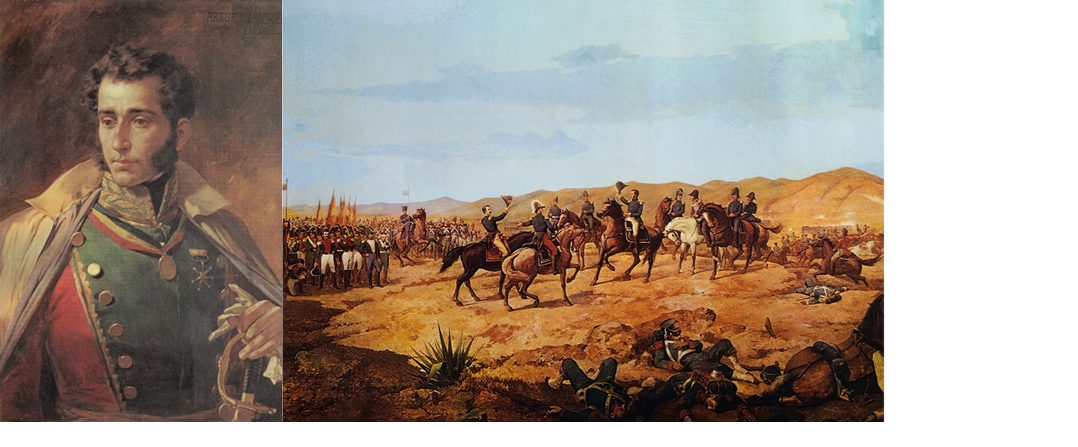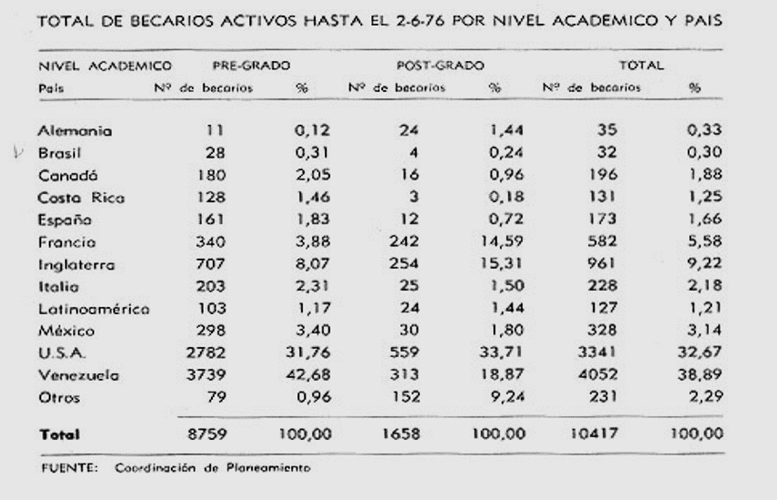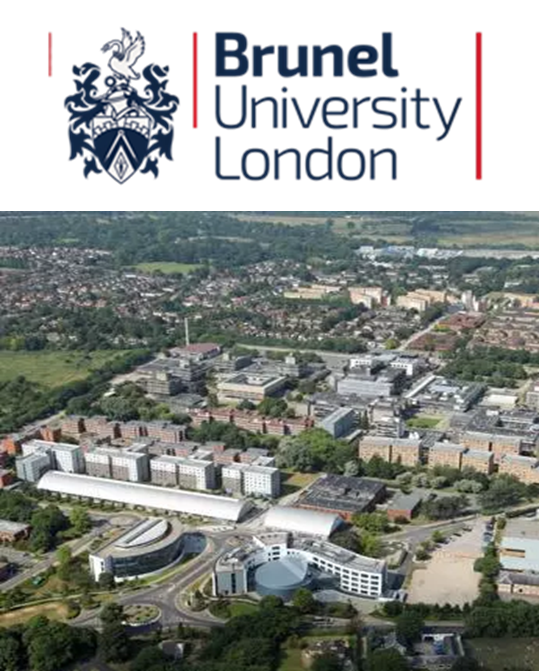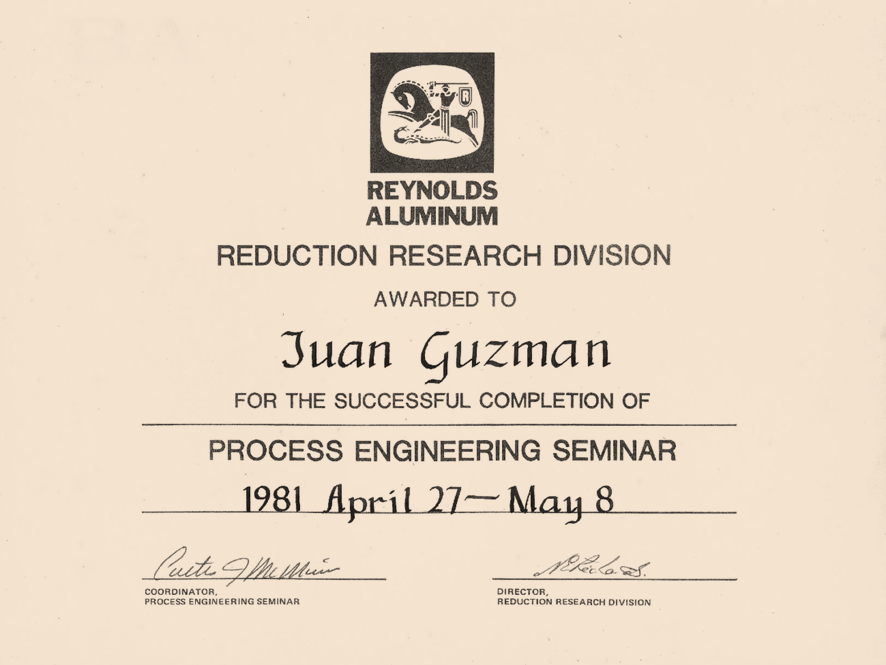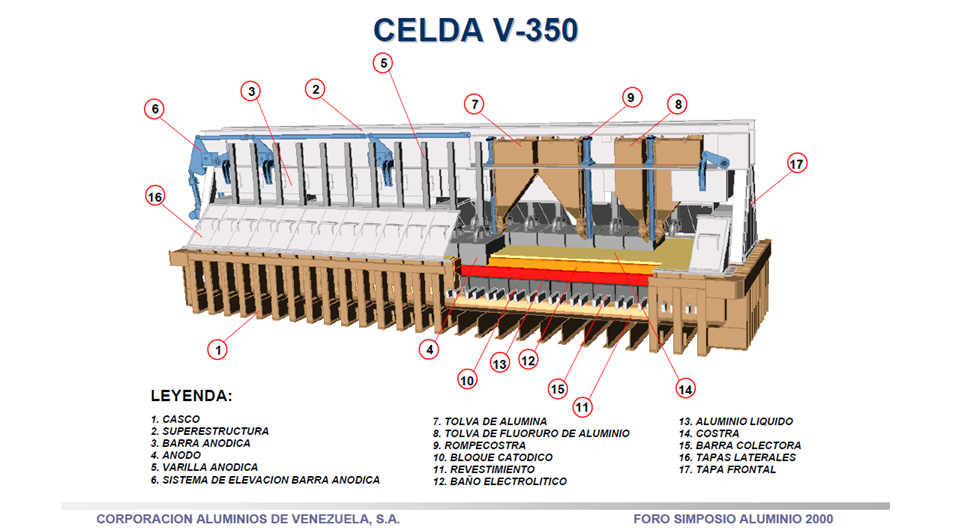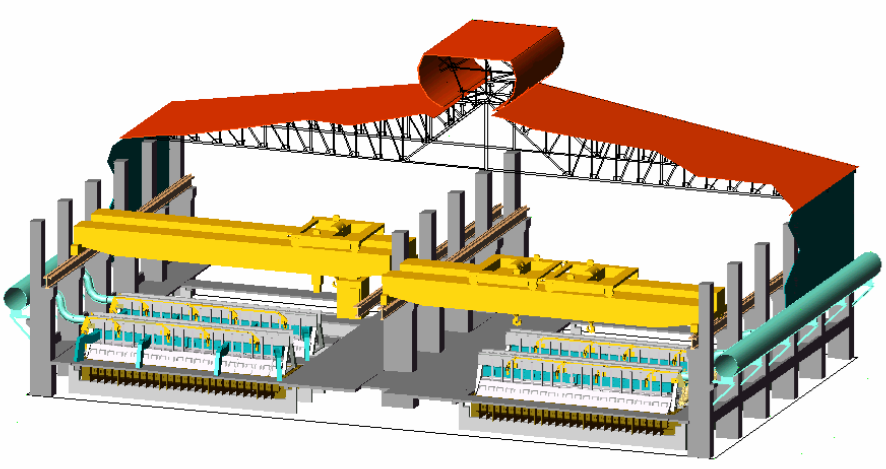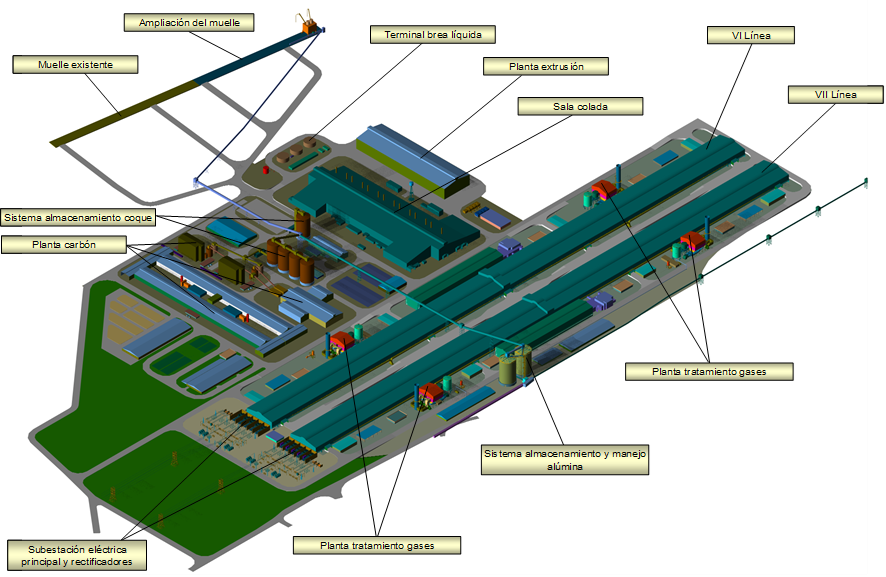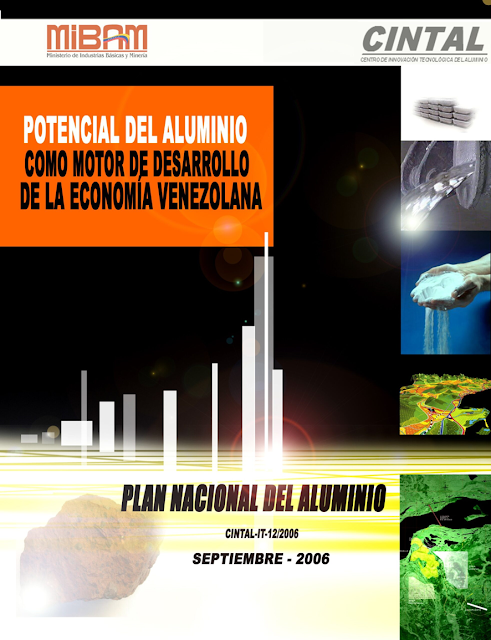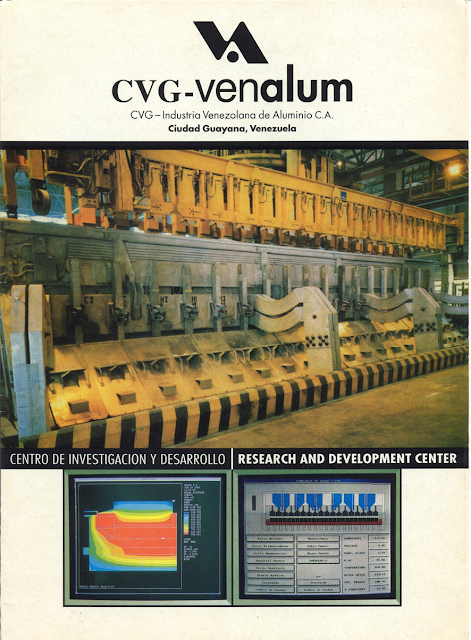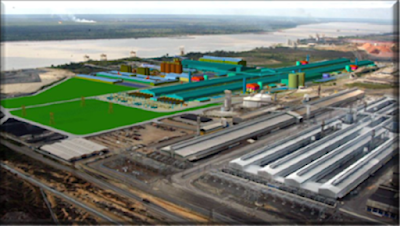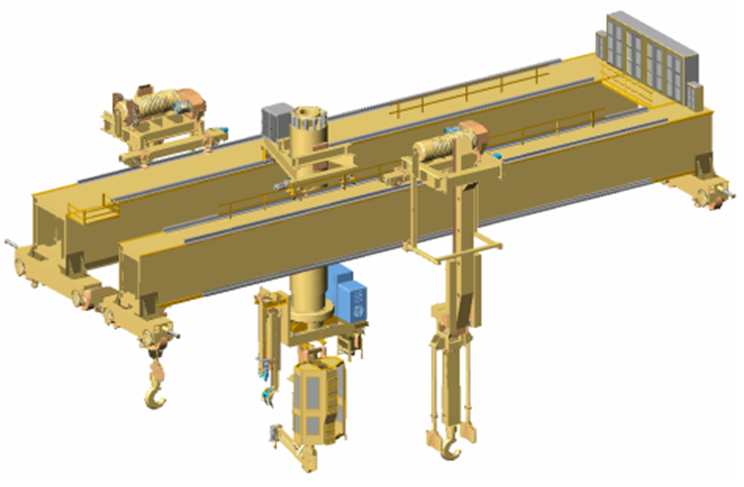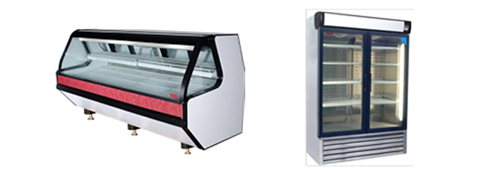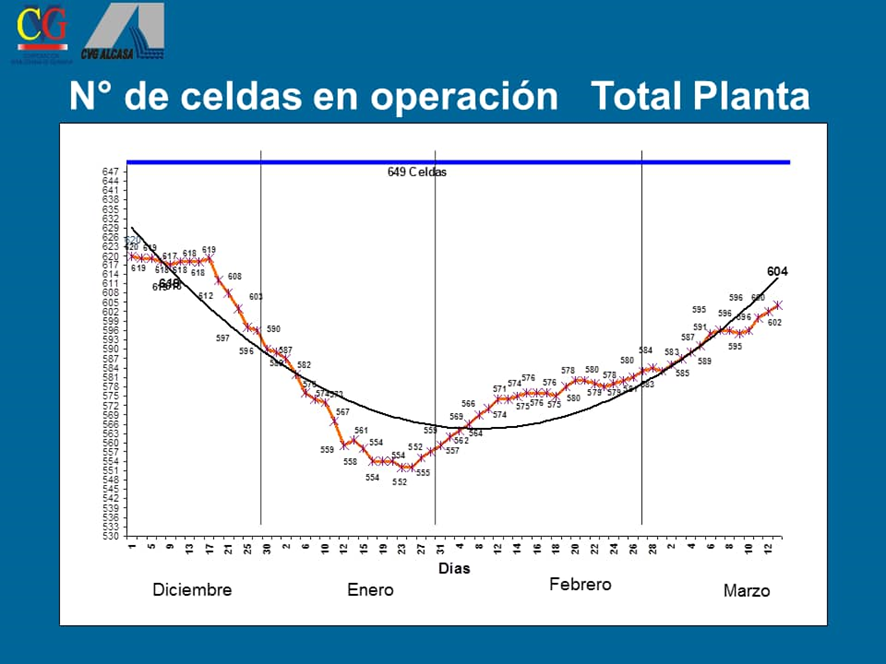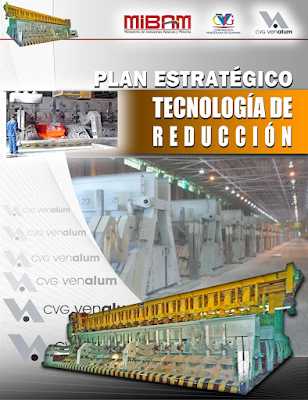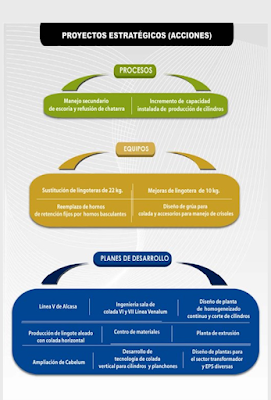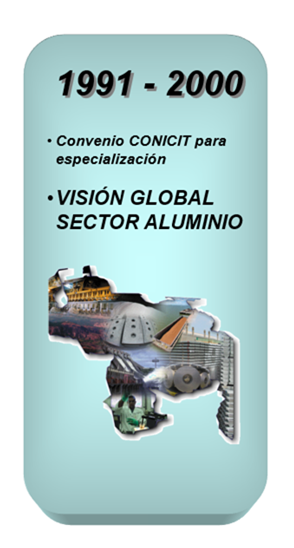Venezuelan
Aluminium Industry, C.A., CVG Venalum. In the background, the design of the
capacity expansion project for lines VI and VII. Photo and Design: CINTAL
TECHNOLOGY,
ENGINEERING, AND INTEGRATED MANAGEMENT: KEY ELEMENTS FOR PRODUCTIVE SOVEREIGNTY
BASED ON TECHNOLOGICAL SOVEREIGNTY
CONTENT
INTRODUCTION
TRAINING
AND DEVELOPMENT PROCESS AT CVG VENALUM
PLAN FOR
THE ADOPTION AND INCORPORATION OF TECHNOLOGIES INTO MODERNIZATION AND V-LINE
PROJECTS
LEARNING
THROUGH THE TECHNOLOGICAL DEVELOPMENT PROCESS: DESIGN OF THE V-350 ALUMINIUM
REDUCTION CELL
TECHNICAL
AUDITS ON THE ALUMINIUM REDUCTION TECHNOLOGY DESIGN: THE V-350 CELL
V-350:
VIRTUES AND BENEFITS
SPECIALIZED
TECHNICAL ASSISTANCE TO CVG ALUMINIUM COMPANIES AS A BYPRODUCT OF RESEARCH AND
DEVELOPMENT INITIATIVES
TECHNICAL
ASSISTANCE TO CVG VENALUM
TECHNICAL
ASSISTANCE TO CVG ALCASA
TECHNICAL
ASSISTANCE TO CVG BAUXILUM
TECHNICAL
ASSISTANCE TO CVG CABELUM
TRAINING
OF RESEARCH AND DEVELOPMENT PERSONNEL AT THE MASTER'S AND DOCTORAL LEVELS
COMPREHENSIVE
AND HARMONIOUS PLANNING FOR SUSTAINABLE DEVELOPMENT
PRACTICAL
RESULTS AS PART OF THE EVOLUTIONARY PROCESS OF THE INTEGRATED ALUMINIUM INDUSTRY
EXPERIENCE
IN THE DEVELOPMENT AND MANAGEMENT OF EXPANSION PROJECTS
CONCLUSIONS
Principio del formulario
INTRODUCTION
In 1975, the construction of Industria
Venezolana de Aluminio, C.A., CVG Venalum, commenced, and it began production
in 1978 with an annual output of 70,000 tons. The construction of its 4 cell
lines using Reynolds Technology, providing an installed production capacity of
280,000 tons per year, was completed by the year 1980.
After implementing enhancements to modernize
its original cells and additionally constructing the V-Line with Hydro
Aluminium Technology, from the 1990s onwards, CVG Venalum achieved an installed
production capacity of 430,000 tons per year, until the supply of electricity
was suspended in 2008.
In 1990, the V-350 cells, cutting-edge 100%
Venezuelan Technology designed by CVG Venalum engineers, began operation with a
production capacity of 2.5 tons per cell per day.
The human capital that received training
organized by Reynolds Metals Company personnel primarily came from our
educational institutions: middle-level technicians, INCE technicians, Higher
University Technicians (TSU), as well as graduates from our universities.
In the late 1970s and early 1980s, the country
started to receive a significant number of university graduates from
universities worldwide through the GRAN MARISCAL DE AYACUCHO SCHOLARSHIP
PROGRAMME.
This initiative by the President of the
Republic, Carlos Andrés Pérez, began on June 4, 1974, with the issuance of
Decree No. 132, which established this programme in honor of the sesquicentennial
of the Battle of Ayacucho, allowing young Marshal Antonio José de Sucre to
complete the process of liberating Latin America.
Antonio José
de Sucre. Michelena, Arturo. 1895, Palacio Legislativo, La Paz. Batalla de
Ayacucho, óleo sobre lienzo de Martín Tovar y Tovar (1827 - 1902)
The purpose of the Gran Mariscal de Ayacucho
Scholarship Programme was aimed at the training of human resources that would
enable us, through a process of technology acquisition and assimilation, to
overcome the stages of scientific and technological dependence and definitively
join the group of autonomous and truly developed countries.
In this regard, the Gran Mariscal de Ayacucho
Scholarship Programme was created, considered a true programme of innovation and
democratization of education.
Of innovation, because Venezuela is one of the
few countries in the world that, by the year 1976, could embark on this
significant task, which would allow it to support approximately 11,000
scholarship recipients both within the country and abroad, a truly significant
number for the country's 12 million inhabitants at that time.
On democratization, because the opportunity was
given to young individuals, primarily from the country's interior and from
households with modest economic resources, both within the country and abroad.
With this, the central government demonstrated that education truly constitutes
a fundamental factor of promotion in all aspects.
A well-educated and skilled population is
essential for the achievement of a nation's economic and social well-being.
Education plays a pivotal role in providing individuals with the knowledge,
skills, and competencies necessary to effectively participate in society and
contribute to a country's economic support.
Quality education significantly enhances the
likelihood of finding employment and enjoying a decent purchasing power and
standard of living.
The Scholarship Programme, which in its initial
stage was affiliated with Cordiplán (Office of Coordination and Planning of the
Presidency of the Republic), became part of the "Gran Mariscal de
Ayacucho" Foundation on July 1, 1975. This change granted it greater
autonomy in decision-making and improved administrative efficiency.
The transition to a Foundation, as enabled by
Decree No. 1000 of July 1, 1975, was further complemented by Decree No. 1332 of
December 16, 1975, from the Presidency of the Republic, specifically stating
that the Foundation, as a non-profit private entity, would be administered by a
Board of Directors consisting of the Foundation's President (an appointee and
removable by the President of the Republic) and four directors representing the
Ministries of Education, Mines and Hydrocarbons, the National Council for
Scientific Research, and Cordiplán.
Venezuela is one of the few countries in the
world with significant potential for non-polluting hydroelectric energy
generation, supporting the industrial sector and job creation. This, combined
with the extraordinary potential of aluminium as an important driver for
development, considering Venezuela's vast resources of bauxite,
hydroelectricity, and natural gas, unfortunately represents a substantial
option that we haven't effectively harnessed for economic development and
diversification, as well as the generation of well-being, based on the
efficient production of this metal.
Both the projection and the behavior of the
demand for aluminium consumption, as well as global price trends, have shown
sustained growth for decades, as illustrated in the following charts and links.
Demand in the consumption of
aluminium
Aluminium prices
https://twitter.com/imeryvenalum/status/1583512018396381185
En Bahrain hicieron su Siembra Petrolera en el
Aluminio
https://twitter.com/imeryvenalum/status/1591002946971799552
OMÁN es otro de los Países Árabes que hizo su Siembra
Petrolera en la Industria del Aluminio
https://twitter.com/imeryvenalum/status/1587045829482844160
Según el Instituto Internacional del Aluminio, cada
trabajo directo de esta industria genera al menos 3,75 empleos indirectos
https://twitter.com/imeryvenalum/status/1577218679355322368
The Gulf Aluminium Industry: A legacy of 5 successful
decades, 6 aluminium smelters
https://www.alcircle.com/news/the-gulf-aluminium-industry-a-legacy-of-5-successful-decades-6-aluminium-smelters-68897?utm_source=newsletter-23-07-2021&utm_medium=news&utm_campaign=primary-aluminium
In this document, we aim to illustrate the
trajectory observed by Industria Venezolana de Aluminio, C.A., CVG Venalum,
from the perspective of the training and development received by its personnel,
as well as the operational, technical, and managerial evolutionary process,
along with the results achieved over three decades (1978-2008). This journey
led CVG Venalum to the effective assimilation and mastery of acquired
technologies, as well as the development and design of proprietary technologies
that enabled the company to attain world-class efficiency and productivity
results, sustainability, and technological sovereignty.
PLANNING OF THE ALUMINIUM SECTOR IN VENEZUELA
My
Experience as a Gran Mariscal de Ayacucho Scholarship Recipient (1976–1980)
Upon completing my second year at Simón Bolívar
University in 1975, I received notification of acceptance into the Gran
Mariscal de Ayacucho Scholarship Programme to pursue undergraduate studies in
England.
In early 1976, I traveled to Manchester, where
I undertook an English language course. In September of that same year, I
commenced my studies in Metallurgy at Brunel University in London, under the
guidance of Professor Bernard Davies.
This was a "sandwich" degree programme
that extended over four years (one year longer than the traditional bachelor’s
programme). During the first three years, students spent six months at the
university, with the remaining six months dedicated to training within the
British industry.
The six months of industrial training were
carried out under contractual agreements with the companies and in compliance
with agreements established with the Workers' Union.
During that time, the Venezuelan Aluminium
Industry, CVG Venalum, was in the construction phase and would utilize the
Aluminium Reduction Technology from Reynolds Metals Company, USA.
Representatives of this company met with professors of the Metallurgy Department at Brunel University to plan the
training of Venezuelan students at the British Aluminium Company in Scotland,
where they had their Aluminium Reduction Plants.
In the first year, I had the wonderful
opportunity to engage in this training programme in Scotland. During the second
year, I undertook training within the Research and Development Department,
focusing on aluminium alloys, at the London & Scandinavian Metallurgical
Company in England. In the third year, I gained experience at the aluminium
rolling and extrusion plant, Alcan, Aluminios de Canadá, in Wales.
In the fourth and concluding year, I dedicated
my efforts to my undergraduate thesis project, which centered on the oxidation
of molten aluminium-magnesium alloys. This research was financially supported by Alcan
Laboratories in England.
Year 1977
Training conducted at the British Aluminium
Company, Kinlochleven, Scotland. Söderberg Type Reduction Cells of 40
Kiloamperes.
Video: ALUMINIUM
REDUCTION CELLS AT KINLOCHLEVEN, from minute 24:45 to minute 26:17
The Electric Village. A video
produced by Fairline Productions for Alcan Smelting and
Power UK
https://youtu.be/vVmwihSRwO0
Covered
Aspects:
- Basic and practical
fundamentals of the aluminium reduction process.
- Study and control of
contamination levels produced during the reduction process.
- Measurement of the electrical
resistivity of the cathodes used in electrolytic cells.
- Measurement of the anodic
profile of the cell.
Year
1978
Training
conducted at the Research and Development Department of London & Scandinavian
Metallurgical Company, Ltd, Rotherham, England.
Projects:
- Manufacturing of an exothermic
compound for the repair of steel industry ladle base.
- Study of the mechanical
properties of welds in some aluminium alloys.
- Effect of boron on the
electrical conductivity of Al-Ti alloys.
NOTE: As an illustration, the offer received
for the second training in 1978 from the London & Scandinavian
Metallurgical Company Limited is shown, which consisted of an annual base
salary of 3060 British pounds.
Year
1979
Training
conducted at ALCAN SHEET Ltd, Rogerstone, Wales.
Covered Aspects:
- Basic and practical
fundamentals of aluminium casting, extrusion, and rolling processes.
Projects:
- Research on the formation of
white spots on rolled products of certain aluminium alloys.
- Research on the tolerance
limits of mechanical properties of certain aluminium alloys.
- Routine control of annealing
furnaces for aluminium alloy sheets.
Year
1980
Undergraduate Thesis: "Morphology of oxide
films formed on the surface of molten Al-Mg alloys employing techniques such as Thermogravimetry, X-ray Diffraction, Electron
Diffraction Microscopy, and Scanning Electron Microscopy with microprobe
analysis.
I presented the results of my thesis work at
ALCAN Research Laboratories in Banbury, Oxon, England. The same work was awarded the CONICIT LONDON Prize
for the best research work conducted by a Venezuelan student in the United Kingdom,
granted by the Venezuelan Embassy in London.
After completing my studies in Metallurgy at
Brunel University, I started my career as a cell line supervisor at Industria
Venezolana de Aluminio, C.A., CVG Venalum, in November 1980. I continued
to serve the company until 2011.
TRAINING AND
DEVELOPMENT PROCESS AT CVG VENALUM
This was a comprehensive process that
encompassed all areas of expertise, including technical aspects (production,
process engineering, quality control, process control, maintenance) as well as
administrative procedures, which were inherited from the technology provider,
Reynolds Metals Company.
Between April 27 and May 8, 1981, a group of
engineers from the Technical Department of CVG Venalum was sent to the United
States to attend the Seminar on Process Engineering conducted by the Reduction
Research Division of Reynolds Aluminium.
Distinguished experts in the field of Aluminium
Reduction Technology, Drs. Alton Tabereaux, Curtis McMinn, and Nolan
Richards, the latter being the Research and Development Manager of Reynolds
Metals Company, were among the professors who delivered the seminar's topics.
Starting from the second semester of 1981, and
for approximately a year, the technicians in the reduction area of CVG Venalum
received on-site training on the fundamentals of aluminium reduction process, operations and engineering. The training aimed at mastering the know-how of the
specialty and was organized by the Japanese aluminium company, Showa Denko (20
percent of CVG Venalum's foreign capital is subscribed by the Japanese
consortium comprised of Showa Denko K.K., Kobe Steel Ltd., Sumitomo Chemical Company
Ltd., Mitsubishi Aluminium Company Ltd., and Marubeni Corporation). Both the
group of Japanese technicians and the training were coordinated by the aluminium
reduction technology specialist, Dr. Takahiro Suzuki.
Based on this acquired knowledge and with the
objective of creating a knowledge multiplier effect, courses were structured
and delivered to personnel in operations, maintenance, quality control, and
process engineering.
Postgraduate studies in Norway
Between 1983 and 1986, I was awarded a
scholarship by Industria Venezolana de Aluminio, C.A., CVG Venalum, which
allowed me to pursue doctoral studies at the University of Trondheim, Norway.
During my stay, I had the honor of working under the guidance of Professor Kai
Grjotheim, who specialized in Aluminium Reduction Technology, and Professor
Harald Øye, specialist in Carbon Technology applied to the aluminium industry,
including Anode and Cathode Technology.
KAI
GRJOTHEIM
Professor Kai Grjotheim garnered unquestionable
global recognition in the realm of Aluminium Reduction Technology and played a
pivotal role in co-authoring academically significant works, including:
"Aluminium Smelter Technology: A Pure and
Applied Approach," co-written with Barry Welch.
"Understanding the Hall-Héroult process
for the production of aluminium," in which he served as an editor
alongside Halvor Kvande.
"Aluminium Electrolysis: The Chemistry of
the Hall-Héroult Process," in which he was also a contributor.
HARALD
ØYE
Professor Harald Øye made a significant mark on
international aluminium industry and education. Since 1982, he spearheaded the
annual Trondheim event known as "The International Course on Process
Metallurgy of Aluminium." Moreover, much of his subsequent scientific work
is documented in the monograph titled "Cathodes in the Aluminium
Industry," co-authored with Morten Sorlie. This work has been published in
English editions in 2010, in Russian in 2013, and in Chinese in 2015.
In recognition of his outstanding work, in
1997, Professor Harald Øye received the Research Council of Norway's Researcher
of the Year award. Additionally, in 1999, he was distinguished as a Knight of
the First Class of the Royal Norwegian Order of St. Olav for Technical
Research, an honor bestowed by King Harald V of Norway.
Norwegian
University of Science and Technology, NTNU
Other Venezuelans, also graduates and
recipients of the Gran Mariscal de Ayacucho Scholarship Programme, in the United
States, England, and other locations, had a similar experience. They
subsequently received on-site training at alumina production plants in
Australia and the United States, forming the successful technical and
managerial team of Interalúmina - Bauxilum.
PLAN FOR
THE ACQUISITION AND ASSIMILATION OF TECHNOLOGIES INCORPORATED IN THE
MODERNIZATION AND V-LINE PROJECTS
As part of the plan for the acquisition and
assimilation of technologies to be incorporated in CVG Venalum's modernization
and V-Line projects, a significant number of its employees attended the annual
event "The International Course on Process Metallurgy of Aluminium"
at the University of Trondheim, Norway, in 1987. They also participated in
training programmes offered by Norsk Hydro in the fields of Aluminium Reduction
Technology and Carbon Technology for anode and cathode manufacturing, which
took place at Årdal plant facilities.
Årdal
Aluminium Reduction Plant, Norway. Photo: Hydro
https://www.hydro.com/es-AR/

The
Multiplying Effect of Acquired Knowledge
As a commitment, all the wealth of knowledge
and experiences gained, documented in various reports prepared by the training
participants, was imparted to operational, engineering, and maintenance
personnel as a multiplying effect for the training of future generations,
nurturing talent in all areas of the plant.
LEARNING THROUGH THE TECHNOLOGICAL DEVELOPMENT
PROCESS. DESIGN OF THE V-350 ALUMINIUM REDUCTION CELL
The central element of the Hall-Héroult process
for aluminium production is the electrolytic cell, with cell production being
proportional to the operating current. This relationship between production and
electricity has led to the design of cells operating at higher amperages with
the aim of increasing production and plant productivity.
Designing efficient high-amperage aluminium
cells is no easy task, and to achieve this, it requires the formation of
multidisciplinary teams capable of interacting and aligning the design
commitments of the different cell components with their individual operation
and their influence on the final performance of the cell.
Special emphasis must be placed on
electromagnetic design because, due to the large currents flowing through the
cells, the liquid aluminium tends not to be at rest, affecting the cell's
efficiency and potentially hindering its operation altogether.
The design of the cell lining is also crucial,
as it governs, among other aspects, the cell's lifespan.
Mechanical design should encompass not only the
required rigidity to withstand the stresses to which the cell's metal structure
is subjected but also the meticulous consideration of all moving parts. These
crucial components necessitate a design approach that strikes a balance between
robustness, functionality, and ease of operation and maintenance.
Up to this point, all the mentioned design
elements are managed through the creation and utilization of intricate
mathematical models, facilitating computer-aided design. This approach serves
to reduce the requirement for prototypes and industrial-scale testing.
Another significant aspect pertains to the automatic
control system. This system depends on a profound comprehension of the aluminium
reduction process and the formulation of control routines that are transformed
into computer programmes. These programmes control the mechanical components of the
cell to execute a range of tasks, such as managing alumina and additive feed,
adjusting operational variables, considering events, and more.
Finally, once the cell is designed, it must be
operated and tested, adjusting, if necessary, some of its designed components
and optimizing its operation before industrial use.
This is an important aspect to mention because
the industrial production of aluminium is carried out in units called production
lines. These lines consist of a set of more than 300 cells, as in the case of
the VI and VII Lines of CVG Venalum, electrically connected in series.

Design of the potrooms and systems related to the reduction
line

Venezuelan Aluminium Industry, C.A., CVG Venalum. In the background, the
design of the capacity expansion project for lines VI and VII. Photo and
Design: CINTAL
The task of designing an electrolytic cell for
aluminium production is, as demonstrated, a complex endeavor. Consequently, the
aluminium industry currently faces a shortage of technology providers in the
reduction sector.
This scarcity of providers has led to elevated
licensing costs and substantial profits for companies that specialize in this
field, rendering it a highly lucrative economic sector.
Furthermore, the CVG Venalum team, operating
independently from commercial ties to any specific firm, collaborates directly
with auxiliary equipment providers for aluminium plants. This collaboration
plays a pivotal role in cost reduction as it allows for the impartial selection
of auxiliary equipment, thereby optimizing the technical and economic aspects
of any project utilizing the V-350 Cell.
The construction of both the experimental cell
line and the facility where the Research and Development personnel would
operate took place at the end of the V-Line. This involved utilizing the
current from the V-Line (220-230 kA), which was later increased to 300-330 kA
using the booster rectifier unit. Additionally, crane services for the cells and
other auxiliary services from the V-Line were utilized in this process.
This marked the commencement of operations for
the Research and Development Centre of Industria Venezolana de Aluminio, CVG
Venalum.
The Prototype V-350 Line has been operated and
optimized since 1990 by the Research and Development Management of CVG Venalum.
Additionally, the design of the V-350 cells and their efficiency have been
audited by international experts in the aluminium industry.
TECHNICAL
AUDITS OF THE ALUMINIUM REDUCTION TECHNOLOGY DESIGN, THE V-350 CELL
The process of technical auditing signifies the
pinnacle of expertise within the Research and Development team. It involves
cutting-edge designs for aluminium reduction cells, which, for the first time
worldwide, operated at amperage levels exceeding 300 kiloamperes by 1990.
Warren E. Haupin
Warren Haupin graduated in Electrochemical
Engineering at Penn State in 1943. He was a Senior Research Engineer for
Aluminum Company of America (Alcoa), where he worked for 40 years. He published
many articles and acquired numerous patents, including one for aluminum can
manufacturing. He taught aluminum metallurgy at the University of Norway for 19
years.
Electrometallurgy
of Aluminum
WARREN
E. HAUPIN and WILLIAM B. FRANK
https://link.springer.com/chapter/10.1007/978-1-4684-3785-0_5
Electrode
Reactions in Hall- Héroult Cells
· Warren Haupin
https://link.springer.com/chapter/10.1007/978-94-009-3863-2_23
Haupin,
W.E. and Frank, W.B., Chapter 5, Vol. 2, Comprehensive Treatise of
Electrochemistry, eds. Bockris, Conway, Yeager and White; Plenum Publishing
Corp., New York, N.Y.,1981, p. 308
These technical audit processes were
coordinated by Dr. Jesús Imery on behalf of the Research and Development
Centre.
Dr. Jesús Imery, upon graduating in 1986, began
working at Industria Venezolana de Aluminio, CVG Venalum, in the newly created
Research and Development unit. He initiated the Conceptual Design of the V-350
Cell and the experimental cell line. He later focused on the development of
mathematical models for calculating current distribution and electromagnetic
fields in aluminium reduction cells, which he used for the optimized design of
the busbar system. This led to the successful operation of a Hall Héroult cell
for the electrolytic production of aluminium with a current intensity exceeding
300 kA, published at the Light Metals Conference in the United States in 1989.
J.Imery.
Electromagnetic optimization of the V-350 Venalum Cell. Light Metals 1989, p.p. 211-214.
This is the design that generates the patent
protecting the industrial property of the V-350 cells in 1990: Electromagnetic
optimization of the electrolytic cell for aluminum reduction.
Tipo: Invención
Inscripción:
No: 90-0830. Fecha: 08/06/1990
Registro:
No. 55.077
He also contributed to the design of the lining
of the V-350 cells and played a crucial role in their setup, tuning, and
characterization.
BRIEF HISTORY OF DR JESUS IMERY
The year 1990 marked the successful start,
commissioning, and performance of the Venezuelan Aluminium Reduction Technology,
the V-350 Cell, designed by Venalum engineers. The purpose was to develop
proprietary technology for CVG Venalum, which would serve as technology for new
aluminium projects in Venezuela, both for Venalum and for privately funded
international ventures in the country. This initiative was supported by the
Minister of State and President of the Corporación Venezolana de Guayana,
Engineer Leopoldo Sucre Figarella.
In this context, when we take into account
Venezuela's abundant resources of bauxite, hydroelectric power, and natural
gas, and the potential for diversifying its economy through efficient aluminium
production, the technologies and knowledge acquired become strategically
crucial for the country's future. This is achieved through the development of CVG
Venalum's proprietary reduction technology: the V-350 Cell.
V-350:
VIRTUES AND BENEFITS
- V-350 is
proprietary technology.
- It is
cutting-edge technology.
- Of
international caliber.
- Guarantees
low investment and operational costs.
- Empowers
CVG Venalum (and consequently the company that uses this technology through it)
to secure better pricing and financing conditions for the equipment and
materials associated with a reduction line.
- Avoids high
technology licensing fees, as well as those for consultations and training.
- Eliminates
all expenses related to overseas travel, as well as costs for foreign personnel
traveling to the country due to the use of foreign technologies.
- Prevents
capital outflow.
- Possesses a
high local component.
- Almost all
of the metalworking and busbar construction for Cell V-350 was performed by
companies in Guayana.
- It has
contributed to the technological knowledge of the Venezuelan aluminium industry
and has prompted the development of materials and equipment that replace those
previously imported.
- It has been
audited by international experts, endorsed for the construction of expansions
and/or new aluminium plants.
- Its use has
been requested by internationally renowned companies.
- Companies
of international repute have shown interest in commercializing this technology.
- It has been
selected as the subject of articles published by international magazines.
- It has been
accepted at prestigious international congresses.
100% Venezuelan Reduction Technology.
The V–350 Cell
Prebake Cell Technology: A
Global Review
https://www.tms.org/pubs/journals/JOM/0002/Tabereaux-0002.html
THE V-350 ALUMINIUM REDUCTION CELL
The Design and Development of High Amperage
Cell Technology for aluminium reduction, undertaken by CVG Venalum's Research
and Development Group, represents a significant milestone in the history of
Science and Technology in Venezuela and a global breakthrough in the aluminium
reduction field. This achievement marked the world's first successful design
capable of operating at amperage levels exceeding 300 kiloamperes in 1990.
V-350 was the only high amperage cell
technology operating at amperage levels exceeding 300 kiloamperes between 1990 and 2000, before any other
successful technology design from any country worldwide. As reported by Dr.
Alton Taberaux in the Journal of Metals, JOM, 52 (2) (2000), pages 22-28, by
the year 2000, the only cells operating at the maximum amperage level of 320
kiloamperes in the aluminium industry worldwide were:
·
The
V-350 Cell from CVG Venalum, Puerto Ordaz, Venezuela, and
·
The
P-320 Cell, Pingguo, China.
"Venalum in Puerto Ordaz, Venezuela,
developed five P-point feed V-350 cells side by side, four side risers, with 36
anodes operating at 320 kA in its development line."
SPECIALIZED TECHNICAL ASSISTANCE TO CVG ALUMINIUM
COMPANIES AS A BYPRODUCT OF RESEARCH AND DEVELOPMENT INITIATIVES
These initiatives of specialized technical
assistance encompassed the following key activities:
- Technical
Support to the Venalum Plant: Our main focus of technical support to the
CVG Venalum plant specifically extends to the reduction areas, carbon
plant, casting processes, and the expansion project, lines VI and VII
within CVG Venalum.
- Boosting
the Aluminium Sector: Our commitment to the aluminium sector also included
critical efforts, which comprised:
·
Expansion
of CVG Alcasa, Line V.
· Enhancing the production capacity of CVG Cabelum.
· Developing a territorial occupation model for
bauxite-alumina operations.
· Crafting a comprehensive Aluminium
Sector Strategic Plan.
These endeavors were undertaken with
precision and dedication, serving as a testament to our commitment to advancing
the capabilities and efficiency of CVG Aluminium Companies through our
collaboration with CVG Venalum's research and development initiatives.
TECHNICAL
ASSISTANCE TO CVG VENALUM
During the privatization process of CVG's
aluminium companies, Venalum had recently been modernized with new technologies
incorporated into the construction of the V-Line.
Ten years after the unsuccessful privatization
process, the smelter continued to operate and produce at its installed capacity
of 430,000 tons per year, with world-class efficiency and productivity results
until 2008, when the power supply was suspended.
Between January 1998 and December 2008,
Venalum's sales revenue amounted to around 8 billion US dollars ($8,000 million
US).
CVG Venalum's operational conditions, as well
as its management and administration, demonstrated internationally the
magnitude of the extraordinary business that results from the integrated aluminium
industry when managed and administered with criteria of excellence.
In 2004, at the request of Marubeni
Corporation, a meeting was held between this corporation, Corporación
Venezolana de Guayana, and CVG Venalum in Puerto Ordaz to discuss with the
Japan Bank for International Cooperation (JBIC) the tentative financial proposal
offered by Marubeni Corporation for the construction of CVG Venalum's VI Line.
Japanese Banks Interested in Financing CVG Projects
Banca japonesa quiere financiar
proyectos de CVG
Venezuelan Aluminium Industry, C.A.,
CVG Venalum. In the background, the design of the capacity expansion project
for lines VI and VII. Photo and Design: CINTAL
As proven worldwide, well-managed and
well-administered aluminium business never becomes an economic burden for the
state.
With its revenues and savings, in the short,
medium, and long term, it ensures the coverage of all its operating,
administrative, financial costs, payment of taxes to the government, major
maintenance, and plant improvements, as well as the economic strength to
finance its expansion projects for production capacity, growth, and
diversification with its own resources.
Industria Venezolana de Aluminio, CVG Venalum, still in times of
operational, technical, and managerial excellence. Source: La Noticia, CVG Venalum,
Año 2, Nº 04, Enero-Febrero de 2003
ENGINEERING AND PROJECT MANAGEMENT OF THE VI LINE
To the initial achievements in the development
of the V-350 Cell, a result of efficient project management, significant
nationally constructed engineering elements have been added. In this second
phase of the project, the Research and Development Management, supported by a
high-level multidisciplinary team with technical and managerial expertise,
carries out the engineering and project management of the VI Line Project, the
first phase of the company's expansion project.
This integrated process of technology,
engineering, and management conducted by the Research and Development
Management for the VI Line Project is beginning to yield significant results.
These include the design of a domestic proposal for specialized cranes in the
reduction area, which will enable CVG Venalum to have its own cranes for the
P-19 cells.
In a similar vein, the design of gas treatment
plants, materials handling and transportation systems, decanting and crucible
cleaning stations, hull straighteners for cells, cell control systems, tilting
furnaces in the casting area, ingot machines, and more have been initiated.
Of marked importance is the fact that many of
the developments resulting from technological innovation in the national aluminium
industry (design of key auxiliary plants and specialized equipment for a
smelter, such as materials handling, storage, gas treatment plants, specialized
cranes for the reduction process, etc.) will be compatible or can be
extrapolated to other areas of the national economy with needs in other
productive sectors.
For example, materials handling technologies can
be used in handling agricultural products such as rice, corn, beans, sugar,
etc. Gas treatment plants, once adapted, can be used in all industrial processes
that require them, and retention and melting furnaces can be used by
metallurgical companies, among others. Another area of action will be the
identification of parts and components that tend to go out of production by
their manufacturers, which can be designed and manufactured locally, thus
avoiding incurring significant replacement costs for equipment that could be
prevented.
Thus, CVG Venalum, through its Research and
Development Management, has dedicated efforts to design all the auxiliary plants
and equipment related to a smelter, while maintaining the strong intention of
putting its technical and managerial expertise at the service of sister
companies in CVG and the national industrial sector, attributes necessary to
embark on the path to technological independence.
ALUMINIUM MANUFACTURING PROJECTS
These initiatives, oriented towards the design, promotion, construction,
commissioning, and technical operation consultancy of aluminium manufacturing companies, have already advanced the conceptual engineering of several projects
under the Research and Development Management. Some of these projects are
listed below.
It is important to mention that, based on the fact that various
components of the structures to be used in these projects are manufactured
using aluminium as raw material produced by the smelters in Venezuela and other
aluminium processing companies such as extrusion and rolling mills, the
construction of these plants not only helps increase the level of aluminium value addition in our country but also contributes to the
productive linkage between various national aluminium manufacturing companies,
with the evident benefits that arise from this interrelation among them.
Additionally, the design, promotion, construction, and operation of
companies related to aluminium manufacture encompass essential production
goods for society, addressing sectors such as food, healthcare, housing, etc.
The expected benefits include the following:
- Increased value added in the aluminium
production chain with significant volumes of medium and high-complexity
parts and components.
- Formation of productive linkages between
various national aluminium manufacturing companies.
- Supply of inputs to the national
manufacturing industry, especially the automotive sector, electrical
sector, and household appliances with the potential to enter any of the
production chains of the national manufacturing sector due to their
versatile applications.
- Encouragement of the national production
of fully assembled equipment since there would be manufacturing capacity
for parts and components serving as inputs for their production.
- Generation of products that, in addition
to exhibiting good profitability, have strategic significance for the
nation due to their impact on social benefits.
- Contribution to public institutional
management in support of sustained impact on promotion strategies in
response to the quality of life needs of Venezuelans, especially in
housing, food security, etc.
- Taking firm steps towards the
consolidation of Productive Sovereignty by stimulating research, design,
and development of production chains supported by the generation of
proprietary manufacturing technologies.
- Increase in non-traditional exports.
- Generation of
sustainable employment.
MANUFACTURE OF ASSISTANCE EQUIPMENT AND
HOSPITAL FURNITURE
MANUFACTURE OF STORAGE REFRIGERATED ROOM
EQUIPMENT
MANUFACTURE OF ALUMINIUM ALLOY BOATS
MANUFACTURE OF PARTS AND COMPONENTS MADE OF
ALUMINIUM ALLOYS
MANUFACTURE OF ALUMINIUM KEYS
MANUFACTURE OF MODULAR ALUMINIUM HOUSING
SOLUTIONS
TECHNICAL
ASISTANCE FROM R&D TO CVG ALCASA
During 2005, Drs. Jesús Imery and Juan Guzmán
were called upon to collaborate with the management of the newly created
Ministry of Basic Industries and Mining, commencing their directorial duties as
members of the Board of Directors of CVG Alcasa, where they successfully formed
a working team that swiftly set in motion all the electrolytic cells of Line
III.
TECHNICAL ASSISTANCE FROM R&D TO CVG
BAUXILUM
In 2005 and the beginning of 2006, Dr Jesús
Imery presided over the Board of Directors at CVG Bauxilum. In addition to his
leadership, a group of engineers from the Research and Development Management,
along with other professionals from the administrative divisions of CVG
Venalum, constitute the board.
To alleviate a tense work environment, a
participatory management approach was introduced. Even a contentious document
previously introduced by the workers' union during the company's prior
administration had to be addressed.
By 2005, CVG Bauxilum had surpassed its
historical production records, substantially improved the work environment, and
reported substantial net profits. Furthermore, it is prepared to advance its
expansion project to produce over three million tons of alumina annually.
The management of CVG Bauxilum extended its
influence by advocating at the national executive level for the establishment
of a caustic soda plant, which accounts for over 70% of the company's raw
material budget.
Recognizing the imperative to enhance the
value-added to our natural resources and stimulate sustainable economic
endeavors, we actively promote the industrial utilization of granite deposits
discovered and studied in areas neighboring the bauxite mine. The Presidency of
the Republic sanctioned the necessary funds to undertake this project.
CVG Conacal collaborated closely with CVG
Bauxilum to construct a lime plant that would cater to the future requirements
of both companies, as well as the new steel company planned by the Ministry of
Basic Industries and Mining.
Furthermore, a strategic partnership with
Saint-Gobain was fostered and solidified to establish a plant in Puerto Ordaz
dedicated to the production of proppants. This crucial input is employed to
optimize gas and oil well operations and was previously entirely imported by
PDVSA.
TECHNICAL ASSISTANCE FROM R&D TO CVG
CABELUM
A segment of the Research and Development
Management Centre, in collaboration with other professionals from the
administrative departments of CVG Venalum, assumed key roles in the company's
management. They proactively participated in various plant activities, yielding
the following notable results, among others
- Halting
equipment deterioration by proposing a structured and planned recovery strategy to restore reliability levels to the minimum expected standards.
- Reorganizing
the Marketing Management, including relocating the office from Caracas to
Ciudad Bolívar, reviewing signed contracts, and implementing a sales strategy.
- In 2005, the change in the premium for conductor sales was achieved, increasing
from 430 US$/t to 950 US$/t. Additionally, the premium for wire rod sales was
raised from 180 US$/t to 400 and 475 US$/t.
In October 2005, a remarkable production
milestone was reached in wire rod, with a total output of 1,643 tons. This achievement was the result of
strategic adjustments made to our processes and equipment, all carried out
using our own resources and diligent maintenance efforts. Notably, this
accomplishment marked the first time in nine years that monthly production
target was exceeded. It stands as a testament to the collective dedication
of our employees and highlights the company's potential to become a significant
player in wire rod and aluminium conductor production, all without requiring
substantial investments.
One noteworthy milestone during this period was
the reactivation of the O.T.T winder on the rolling line, which had remained
dormant for over eight years. The Maintenance Management team at CVG Venalum played a pivotal role in
this revival by constructing a new hydraulic unit and fine-tuning the winding
system. Furthermore, the automatic cutting system underwent modifications and
received valuable support from our plant personnel.
To bolster the reliability of our rolling line,
we also took the initiative to replace the outdated AC/DC converters that
powered the primary motors of the casting wheel, conveyor, and rolling mill.
The previous converters had become obsolete, with no spare parts available in
the market, resulting in frequent, unexpected breakdowns.
Throughout the years from 1998 to 2004, many
pieces of equipment received minimal maintenance attention and operated at
significantly reduced capacities.
Following a diagnosis performed by the Research
and Development Management's personnel in 2004 within the production area, a
project for technological adaptation and increased production up to 60,000
t/year of conductors was proposed, thereby enhancing the company's
profitability.
These achievements underscore our commitment to
enhancing operational efficiency and optimizing our overall performance at CVG
CABELUM.
CVG Cabelum had access to this funding, which was
approved as a loan by CVG in accordance with Resolution DIR 9125 dated
12/14/2005.
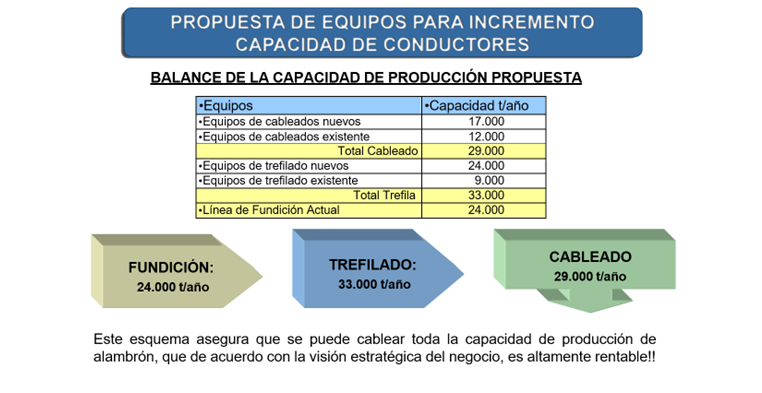

STRATEGIC
INNOVATION PLAN FOR THE ALUMINIUM SECTOR
TRAINING
RESEARCH AND DEVELOPMENT STAFF AT THE MASTER'S AND DOCTORAL LEVELS
Starting in 1992, a segment of the
multidisciplinary team from the Research and Development Centre, through an
agreement between Industria Venezolana de Aluminio, C.A., CVG Venalum, and the
National Council for Scientific and Technological Research (CONICIT),
participated in master's and doctoral degree programmes in fields such as
Systems Engineering, Computer Science, Telematics, Instrumentation, Electronic
Engineering, Mechanical Engineering, and Materials Engineering.
These programmes took place in England, the
United States, and Spain, and it was the only agreement of its kind established
and implemented between the National Council for Scientific and Technological
Research, CONICIT, and the industry.
The agreement between the company and the
Venezuelan Council of Scientific and Technological Research, CONICIT, aimed to
create a highly academic group with prior industrial experience to complement,
increase, and consolidate its specialized technical support capacity for the
Aluminium Sector, as well as to implement policies with a multiplier effect on
this knowledge and expertise. These would be used both for training the next
generations and enhancing the technical skills of the company's staff.
Members of this high-level group have served as
professors and lecturers at universities in various fields, including
Engineering and Materials Science, Mechanical Engineering, Industrial
Automation and Process Control, Information Technologies, Industrial Process
Control and Supervision Systems, Electrical and Computer Engineering, among
others.
Additionally, among the group's academic
achievements, they have acted as academic or industrial mentors for many
students, some of whom have become highly accomplished professionals working
not only in Venezuela but also in other countries, such as the United States,
Canada, and Germany.
This multidisciplinary group of high-level
professionals graduated from nationally and internationally recognized
universities and boasts extensive experience in developing and implementing
technical and managerial solutions in the aluminium industry. They have
expertise in developing technologies for aluminium production, including parts,
components, equipment, control systems, process supervision and information,
and plants.
This high-level group has worked for over three
decades within the aluminium industry, also with a high level of success in
executive positions and as members of Boards of Directors of companies involved
in bauxite exploration, extraction, handling, and transport, alumina
production, aluminium reduction, rolling, wire drawing, and electrical conductor
manufacturing.
COMPREHENSIVE AND HARMONIOUS PLANNING FOR
SUSTAINABLE DEVELOPMENT
In addition to their academic training and
their technical and managerial experience in the aluminium industry, the
Research and Development staff at CVG Venalum have gained valuable insights
from studying in countries like England and Norway. These experiences have
allowed them to assimilate the strategies employed in these nations for
structuring government policies that have led to significant growth in the
technological and productive sectors, ultimately fostering a high standard of
living for their residents.
The reconstruction of Venezuela necessitates
not only the restoration of the existing industrial infrastructure from the
late 20th century but also the planning and execution of projects aimed at
diversification and productive growth. In these endeavors, the Aluminium
Industry stands as a crucial ally in achieving these noble objectives, much
like the countries in the Cooperation Council for the Arab States of the Gulf
view this industry as a potent tool for diversifying their economy and creating
wealth and well-being.
The Gulf Aluminium Industry: A legacy of 5 successful decades, 6 aluminium smelters
The impact of the aluminium sector on the UAE economy
PLANNING OF ALL PRODUCTIVE AND SERVICE SECTORS
PRACTICAL RESULTS AS PART OF THE EVOLUTIONARY
PROCESS OF THE INTEGRATED ALUMINIUM INDUSTRY
In practical results, CVG Bauxilum achieved a
historic production record in 2005, producing 1,950,000 tons of alumina that
year, demonstrating the optimal condition of the refinery systems and the technical
and managerial capacity that Bauxilum had throughout most of its history, at
least until that time.
Under the management of Engineer Noel Mariño as
the General Manager of Operations, it was possible to reach the highest level
of production in the history of Los Pijiguaos Bauxite Mine in 2006, with a
production of 5,927,839 tons in crushing and 5,764,053 tons in barge loading.
THE UNSUCCESSFUL PRIVATIZATION ATTEMPT OF CVG ALUMINIUM
COMPANIES, 1996-1998
The privatization process of
the Steel Company, SIDOR, was successful. The way in which the privatization
process is carried out in the case of the aluminium companies in the
years 1996-1998:
Senior government officials
under President Rafael Caldera's administration, tasked with overseeing the
privatization process, presented aluminium companies to potential investors as
having minimal value. They justified this by emphasizing that selling these
aluminium companies was imperative for the country due to the government's
inability to finance the substantial investments needed to modernize the
entities within the Venezuelan Aluminium Corporation, which were slated for
privatization. They also cautioned that these companies would likely cease
operations within a year due to their deteriorating condition, making them
unattractive for acquisition or donation.
VENEZUELA: El sector del aluminio no tiene quien lo
compre
VENEZUELA: Agresiva privatización acompaña plan de
ajustes
Ante inversionistas interesados en el aluminio
ejecutivo ratificó privatización de las empresas del aluminio para I trimestre
de 1998
VENEZUELA: Comienza cuenta regresiva para
privatizar el aluminio
FRACASA VENTA DE EMPRESAS DE
ALUMINIO EN VENEZUELA
IMPROVEMENTS
TO THE PLANT AND THE CONSTRUCTION OF THE V-LINE AT CVG VENALUM
The construction project of the V-Line and the
installation of all HAL-230 Technology Hydro Aluminium cells was completed in
the early 1990s.
Similarly, the modernization project of cells
in Complexes I and II was carried out with the following improvements:
- Installation of the conductor
bar system to compensate for the cells' magnetic field.
- Point feeding system for
alumina dosing.
- Aluminium
fluoride feeding system.
- Automated control system for
the cells.
- Information and cell
supervision system.
Improvements
were also made to the auxiliary systems in the cell rooms:
- Materials handling systems.
- Gas treatment system for
environmental improvements.
With the new cell line, the V-Line, and the
modernization of cells in the Complexes, Venalum's reduction area was brought
up to date with the state-of-the-art reduction technology. It was
then ready to reap the benefits of that investment from that decade.
This technology is efficient, productive, and
above all, profitable, not far from the state of the art even today in 2023.
Additionally,
improvements were made to accompany the reduction process:
- In the carbon area to introduce
improvements in anode quality.
- And
in the casting area: furnaces, casting tables, for the production of
cylinders for extrusion, among other improvements.
At the time of the privatization process, CVG
Venalum had been recently modernized with new technologies incorporated in the
construction of the V-Line.
If the government agencies responsible for the
privatization process claimed that CVG Venalum was so deteriorated, why did it
continue to operate at the level of its installed capacity of 430,000 tons per
year and achieve world-class efficiency and productivity results. Ten years
after the unsuccessful privatization process, power supply was suspended in
2008.
Between January 1998 and December 2008,
Venalum's revenue from sales amounted to approximately 8 billion dollars
($8,000 million US$).
The operational conditions, management, and
administration of CVG Venalum showcased on an international scale the immense
potential of the integrated aluminium industry when it is overseen and
administered with a commitment to excellence.
Industria Venezolana de Aluminio, CVG Venalum,
still in times of operational, technical, and managerial excellence. Source: La Noticia, CVG Venalum, Año
2, Nº 04, Enero-Febrero de 2003
EXPERIENCE IN THE DEVELOPMENT AND MANAGEMENT OF
EXPANSION PROJECTS
In 2004, at the request of Marubeni Corporation,
a meeting was held between this corporation, CVG, and CVG Venalum to discuss,
in Puerto Ordaz, the tentative financial proposal offered by Marubeni
Corporation for the construction of the VI Line of CVG Venalum with the Japan
Bank for International Cooperation (JBIC).
Japanese Bank Interested in Financing CVG
Projects
Banca
japonesa quiere financiar proyectos de CVG
Venezuelan Aluminium Industry, C.A., CVG Venalum. In the background, the
design of the capacity expansion project for lines VI and VII. Photo and
Design: CINTAL
The projects for the construction of cell
lines, namely V Alcasa Line and VI and VII Venalum Lines, were developed
following the approval of all corresponding technical and economic feasibility
studies, along with budgets sanctioned by the respective government agencies.
Extensive efforts were invested in the
conceptual and basic design phases, and important part of the detailed
engineering, of the CVG Venalum and CVG Alcasa Expansion Plans. Furthermore,
substantial efforts were dedicated to securing the necessary financial
resources for project execution, as well as ensuring a stable and sustainable
supply of electricity and alumina to support their profitable operation.
Regrettably, both plans encountered an
unexpected halt during the initial phase of land preparation, without any
official notification or explanation provided.
ALUMINIUM TECHNOLOGY INNOVATION CENTRE
CINTAL
NEW TERRITORIAL MODEL
The team at the Aluminium Technology Innovation
Centre, CINTAL, designed the Conceptual Engineering for two Aluminium Cities,
located in Caicara del Orinoco and El Palmar, promoting aluminium not only as an
economic activity but also as a driver of territorial development.
CONCLUSIONS
TRAINING PROCESS IN CVG VENALUM
YEARS 1978-1986
In 1975, the construction of Industria
Venezolana de Aluminio, C.A., known as CVG Venalum, commenced, and by 1978, it
achieved an annual production of 70,000 tons. The construction of its 4 cell
lines, developed in collaboration with Reynolds Technology, was completed in
1980, resulting in an installed production capacity of 280,000 tons per year.
The workforce that received training was
predominantly guided by personnel from Reynolds Metals Company and consisted
mainly of individuals from our educational institutions. This included
middle-level technicians, INCE technicians, Higher University Technicians
(TSU), and graduates from our universities. The training was conducted at a
high level in various specializations, encompassing both technical areas
(production, process engineering, quality control, process control,
maintenance) and administrative aspects inherited from the technology provider,
Reynolds Metals Company.
In the late 1970s and early 1980s, Venezuela
started welcoming a substantial number of university graduates from
institutions worldwide through the GRAN MARISCAL DE AYACUCHO SCHOLARSHIP
PROGRAMME. Some of these graduates joined the ranks of CVG Venalum.
Between April 27 and May 8, 1981, a group of
engineers from CVG Venalum's Technical Department traveled to the United States
to attend the Seminar on Process Engineering hosted by the Reduction Research
Division of Reynolds Aluminum. Distinguished authorities in Aluminium Reduction
Technology, including Drs. Alton Tabereaux, Curtis McMinn, and Nolan Richards
(the Research and Development Manager of Reynolds Metals Company), served as
instructors for the seminar.
Commencing in the latter half of 1981, for
approximately one year, technicians from the reduction department at CVG
Venalum received hands-on training in the fundamentals of the aluminium
reduction process, operations, and engineering to master the specialized
"know-how." This training was organized in collaboration with the
Japanese aluminium company, Showa Denko, which holds a 20 percent stake in CVG
Venalum as part of the Japanese consortium comprising Showa Denko K.K., Kobe
Steel Ltd., Sumitomo Chemical Company Ltd., Mitsubishi Aluminium Company Ltd.,
and Marubeni Corporation. The group of Japanese technicians and the training
programme were overseen by the aluminium reduction technology expert, Dr.
Takahiro Suzuki.
Building on this knowledge, and with the aim of
creating a ripple effect of knowledge, courses were designed and delivered to
personnel in operations, maintenance, quality control, and process engineering.
These courses were periodically updated to ensure continued education and
expertise development.
ORIGIN
AND EVOLUTION OF THE CVG VENALUM RESEARCH AND DEVELOPMENT MANAGEMENT CENTRE
YEARS 1986-1991
In 1986, research and development activities
began with the Conceptual Design of Cell V-350 and the experimental cell line.
In 1990, a significant milestone was achieved
with the successful launch, commissioning, and operation of the 100% Venezuelan
State-of-the-Art Aluminium Reduction Technology, known as the V-350 Cell. This
cutting-edge technology was meticulously designed by Venalum's engineers with
the objective of creating proprietary solutions for CVG Venalum. It not only
served the needs of Venalum but also paved the way for potential future
aluminium projects, including those involving international private investments
in Venezuela. This forward-thinking initiative received strong support from
Engineer Leopoldo Sucre Figarella, the Minister of State and President of the
Corporación Venezolana de Guayana.
After introducing improvements to modernize its
original cells and additionally constructing the V-Line with Hydro Aluminium
Technology, CVG Venalum reached an installed production capacity of 430,000
tons per year from the 1990s until 2008 when the electricity supply was
suspended.
YEARS
1991-2000
GLOBAL VISION OF THE ALUMINIUM SECTOR
Iniciatives led by the Research and Development Centre of CVG Venalum.
A comprehensive vision aimed at maximizing the
country's hydropower potential for the most efficient development of the entire
production chain: bauxite, alumina, aluminium, and transformation.
Interaction among companies Alcasa, Venalum,
Bauxilum, Cabelum, with the goal of improving their operations and processes
through the exchange of experiences. Especially, in the case of similar
production processes in Alcasa and Venalum.
An Information Analysis System for Cells (SAIC)
was implemented for both of these companies to monitor all cells across the 7
reduction lines (2 from CVG Alcasa and 5 from CVG Venalum). This system
encompasses not only process variables but also their interrelationships,
graphical representations, as well as consumption and cost indicators.
CONICIT – CVG VENALUM AGREEMENT
TRAINING OF CVG VENALUM'S RESEARCH AND DEVELOPMENT
PERSONNEL AT THE MASTER'S AND DOCTORAL LEVELS
Starting in 1992, part of the multidisciplinary
team from the Research and Development Management participated in programmes for
specialization at the master's and doctoral levels in areas like Systems
Engineering, Computing, Telematics, Instrumentation, Electronic Engineering,
Mechanical Engineering, and Materials Science. These programmes took place in
England, the United States, and Spain, and represented the only agreement of its
kind between the National Council for Scientific and Technological Research
(CONICIT) and the industry.
The agreement between the company and the
Venezuelan Council for Scientific and Technological Research (CONICIT) aimed to
form a high-level academic group with prior industrial experience to enhance
and consolidate their specialized technical support capacity for the Aluminium
Sector. The agreement also aimed to implement policies to have a multiplying
effect on this knowledge and expertise, which could be used not only for
training future generations but also to reinforce the technical level of the
company's personnel.
Members of this group have been lecturers and
speakers at universities in fields like Engineering and Materials Science,
Mechanical Engineering, Industrial Automation, Process Control, Information
Technologies, Industrial Process Control and Supervision, Electrical
Engineering, and Computing, among other areas.
Likewise,
among the group's academic achievements, their work as academic and/or industrial
tutors of many students stands out, some of them very prominent professionals
working not only in Venezuela, but in other latitudes: the United States,
Canada, Germany.
This multidisciplinary group of high-level
professionals graduated from nationally and internationally recognized
universities and has extensive experience in the development and implementation
of technical and managerial solutions in the aluminium industry. They have
expertise in developing technologies for aluminium production, including parts,
components, equipment, control systems, supervision, and information systems,
as well as plants.
This high-level group has worked in the aluminium
industry for over three decades, holding managerial positions and serving as
members of boards of directors in companies involved in bauxite exploration,
extraction, handling, and transport, alumina production, aluminium reduction,
rolling, wire drawing, and electric conductor manufacturing.
YEARS
2001-2030
CVG VENALUM
Undoubtedly, the formation of integrated work
teams focused on TECHNOLOGY DEVELOPMENT, ENGINEERING, and PROJECT MANAGEMENT is
the key to consolidating PRODUCTIVE SOVEREIGNTY based on TECHNOLOGICAL
SOVEREIGNTY. At CVG Venalum, we are taking a significant step towards the
Technological Independence that Venezuela needs to progress towards the levels
of well-being our society requires, demands, and deserves on its path to the
global leadership position our country is destined for in this century.
During this stage of work at CVG Venalum, the
activities of technical assistance continue, but now there is a focus on
collaborating in the structuring of a National Aluminium Plan, promoting the
aluminium industry, and expanding the installed capacity. This work made significant
progress in the year 2000 when the R&D Centre coordinated the representation of the
Venezuelan Aluminium Sector at our National Pavilion at EXPO 2000 in Hannover,
Germany, and at the Aluminio 2000 Symposium in Puerto Ordaz.
In both events, the promotion of the country's
potential for efficient aluminium production was formally relaunched, reversing
the negative campaign that had been held against this vital part of the
national economy. Additionally, the new Project of the V Line of CVG Alcasa,
based on National Technology, the V-350 Cell, was presented for the first time,
along with important aspects related to the recovery of CVG Alcasa.
These early achievements
in the tireless work of rescuing and promoting the image of the Venezuelan
Aluminium Sector internationally were further enhanced in 2003 through
participations organized by the Research and Development Centre of CVG
Venalum at the Aluminium and Energy Congress in South Africa and the Commodities
Research Unit (CRU) Congress in the United States. In these forums, the new
focus for the sector was formally presented to the international aluminium business
community. In 2004, there was also participation in the TMS 2004 Congress in
the United States, where the Expansion Plan of CVG Venalum, including the Sixth
and Seventh Lines, was shared with the international community.
In line with these
activities, work was done on the conceptual and basic design of the CVG Venalum
Expansion Plan, as well as in securing the financial resources for its
execution. Likewise, in defining the guarantee of electricity and alumina
supply for the stable, profitable, and sustainable operation of these projects.
The expansion project
that had been approved and initiated at Industria Venezolana de Aluminio, CVG
Venalum, was halted without official notification in 2006.
CVG ALCASA
In 2005, the newly
created Ministry of Basic Industries and Mining called on Drs. Jesús Imery and Juan Guzmán to collaborate with its management, commencing their
directorial duties as members of the Board of Directors of CVG Alcasa. They
managed to assemble a working team that brought all the electrolytic cells of
Line III into operation in record time.
Starting in April of the
same year, both professionals were appointed as Presidents of CVG Bauxilum (Dr.
Jesús Imery) and CVG Cabelum (Dr. Juan Guzmán), respectively. The Boards of
Directors of both companies were composed of professionals from both the
Research and Development Centre and the administrative areas of CVG
Venalum.
CVG BAUXILUM
CVG Bauxilum presented a different situation.
In 2005, the company surpassed its historical production, significantly
improved the work environment, reported net profits, and was prepared to launch
its expansion project to produce over three million tons of alumina annually.
In addition, the
management of CVG Bauxilum extended beyond its borders. The construction of a
caustic soda plant was promoted at the national executive level, an input that
represents over 70% of the raw material budget for the company.
Recognizing the need to
increase the value-added to our natural resources and generate new sustainable
economic activities, industrial use was promoted for granite deposits
discovered and studied in areas near the bauxite mine. Approval from the Office
of the President was obtained to allocate the necessary funds for this project.
Collaboration with CVG Conacal was established
for the construction of a lime plant to meet future needs for both CVG Bauxilum
and the new steel company to be built by the Ministry of Basic Industries and
Mining.
A strategic alliance with
Saint-Gobain was also promoted and consolidated for the construction of a
proppants production plant in Puerto Ordaz, a critical input used to optimize
gas and oil wells. PDVSA imported the entirety of this product. This has been
the only international private capital project consolidated in the Guayana
region.
CVG CABELUM
At CVG Cabelum, among
other things, the following results were achieved:
Preventing equipment
deterioration by proposing a structured and planned recovery plan to restore reliability
to expected levels.
Reorganizing the
Marketing Management, including relocating the office from Caracas to Ciudad
Bolívar, reviewing signed contracts, and sales schemes.
In 2005, changes were
achieved in conductor premiums, increasing from 430 US$/t to 950 US$/t, and
wire rod premiums from 180 US$/t to 400 and 475 US$/t.
October 2005 saw a record
production of wire rod, reaching 1,643 tons, exceeding the monthly production
level not achieved for nine (9) years.
The O.T.T winder in the
rolling line, which had been out of service for over eight years, was put into
operation.
From 1998 to 2004, most
of the equipment received minimal maintenance, with many of them operating at
levels as low as 30% of their installed capacity, such as the drawing machines.
A project was presented
for technological adaptation and production increase up to 60,000 tons/year of
conductors, resulting in increased profitability for the company. This project
was approved in a memorandum presented to the President of the Corporación
Venezolana de Guayana, and funding was approved as a loan by CVG, according to
Resolution DIR 9125 dated 12/14/2005.
CINTAL,
ALUMINIUM TECHNOLOGY INNOVATION CENTRE
As the President of
CINTAL, Dr. Jesús Imery collaborated closely with leading researchers from CVG
Venalum's Research and Development Management to establish this centre.
During
its inception, the primary focus was on consolidating expansion and economic
recovery projects for national aluminium sector companies, as well as the
development, promotion, funding acquisition, and execution of value-added
projects for primary aluminium.
CINTAL not only promoted
aluminium as an economic activity but also as a catalyst for regional
development. It designed the Conceptual Engineering for two Aluminium Cities,
situated in Caicara del Orinoco and El Palmar, respectively.
Given Venezuela's vast
potential for efficient and sustainable aluminium exploitation and the urgent
need to create jobs, improve living standards, and rectify the flawed
territorial development model that has plagued our country for decades, it is
imperative to harness the nation's full potential to achieve these vital goals.
In this context, it is
inexcusable to miss the latent opportunities that have arisen due to
Venezuela's numerous advantages for the growth of its aluminium industry, which
has consigned thousands of Venezuelans to a life of poverty.
The country is on the
brink of a transformative process, representing the last beacon of hope.









